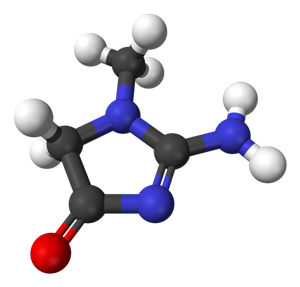
Creatinine is a product of the breakdown of creatine phosphate. This reaction occurs in muscle action. Creatinine is one of the important metabolic waste products filtered from the blood by the kidneys. For that reason, levels of serum creatinine as indicated by a blood test are an important diagnostic tool for detecting renal (kidney) dysfunction.
Normal Range
The normal range for serum creatinine can be from 0.6 to 1.3 milligrams per deciliter. This figure varies by a number of factors, however: muscle mass, size and weight, age, gender, and even from laboratory to laboratory. It’s important to know all of these factors before performing the blood test in order to know how to calibrate the analysis. Men usually have higher creatinine levels than women, adults than children, and physically active people than those who are less active.
High Creatinine
Although a rise in blood creatinine is an indicator of renal damage, this outcome only occurs when the disease is fairly advanced, meaning that it is of limited use in detecting kidney disease early. Creatinine may also be elevated due to dehydration. A more useful early test is the creatinine clearance test, which measures the speed with which creatinine is filtered from the blood.
If serum creatinine levels or creatinine clearance indicates a possibility of renal disease, further diagnostic testing is usually called for to verify and specify the type of kidney disease. One useful test is the BUN-
Detecting renal damage, especially from chronic kidney disease, is very important because the damage caused by this progressive deterioration in kidney function is irreversible. Appropriate treatment can often arrest the progression of the disease and preserve kidney function at a level compatible with health and life. If the damage proceeds too far, however, the only alternative may be renal replacement therapy (dialysis or a kidney transplant).
Low Creatinine
As a general rule, low creatinine levels (lower than the normal range) is not of concern compared to high creatinine and merely indicates a very efficient pair of kidneys, or in some cases pregnancy. However, there are a few causes of low creatinine that can represent serious health problems.
One of these is loss of muscle mass. This can be due to any number of illnesses that cause wasting or atrophy of the skeletal muscles, or to an extremely low-
Creatinine And Dialysis
Creatinine tests are not a very good guide to when to start dialysis, but they can be a good follow up monitor for how well the dialysis is working. Tests for the glomular filtration rate (GFR), a fine-
is started on dialysis. Follow-
